Two strange bear deaths captured on camera in Katmai National Park in Alaska has National Park Service investigators puzzled.
The video came from remote cameras positioned throughout the park, allowing bear watchers to monitor the populations from afar.
On October 21, while thousands of viewers online watched the bear cam stationed at Brooks Camp near Naknek Lake, a bear sow and her two cubs were meandering in front of the camera when one of the cubs stumbled and fell.
After crawling a short distance, the cub died. Nearby, an adult male brown bear was found dead as well. NPS field biologist Michael Saxton said the cause of death for these bears is not yet known.
“It seems to be pretty sudden,” Saxton told Alaska TV news station KTUU. “Gross necropsy has already been completed. We’ve examined the organs to see if anything is visibly traumatic. We would expect to get toxicology reports back fairly soon but getting back things like bacteria cultures could take months.”
It’s not uncommon for park officials to discover bears that have died from injuries, but the mysterious deaths are practically non-existent until now.
“We see bears, especially cubs, being killed by other bears; that’s why mother bears are very protective. We also know there are a lot of bears that go missing that we never see again… we’ve found bears at the bottom of cliffs,” Park Resource Manager Troy Hamon told the Alaska Dispatch News.
“But our understanding of the non-traumatic mortality modes is fairly uncommon.”
In another incident, bear cam viewers noticed a bear-shaped blob laying on a sand spit near a boat. Comparing screen grabs, viewers determined the blob had not been there earlier, and so brought it to the attention of park rangers.
“We have bears that lay down for six hours, or even sleep for a day,” said Hamon, “But when a bear lays down for two days, it’s dead.”
Hamon said everything from poisoning to infectious disease has been considered, but so far samples sent to a lab in Wisconsin have only ruled out a few possibilities. Saxton said rabies and toxioplasmosis have come back negative.
In a recent on-line former, rangers reported the death of the cub is most likely due to canine adenovirus, a naturally occurring virus in the bear population. The adult bear, meanwhile, is still unknown, and the investigation is ongoing.
For more photos of the necropsy, click here.
Dead Bear
-
Katmai National Park
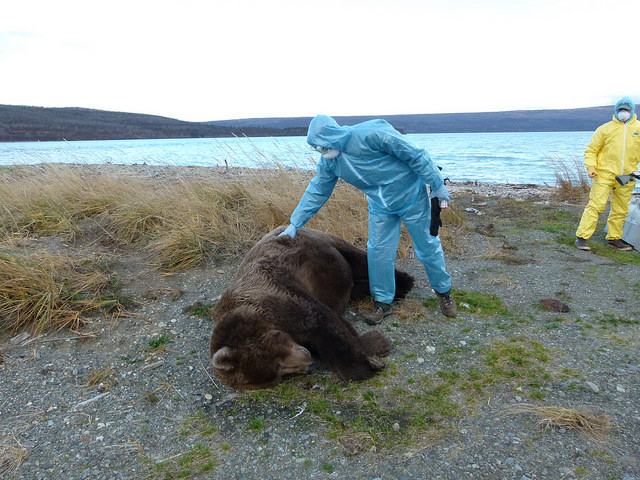
Wildlife officials at Katmai National Park perform a field necropsy on a dead Grizzly bear.
Photos courtesy Katmai National Park
-
Katmai National Park
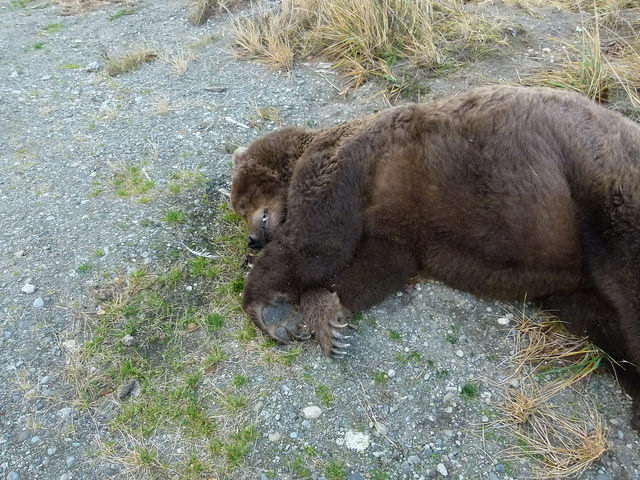
Wildlife officials at Katmai National Park perform a field necropsy on a dead Grizzly bear.
Photos courtesy Katmai National Park
-
Katmai National Park
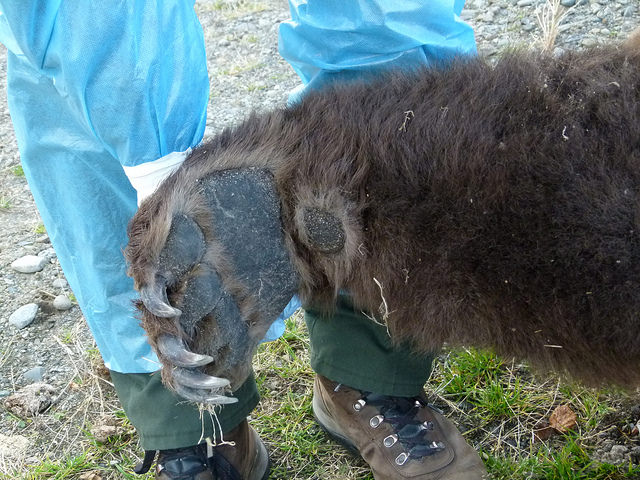
Wildlife officials at Katmai National Park perform a field necropsy on a dead Grizzly bear.
Photos courtesy Katmai National Park
-
Katmai National Park
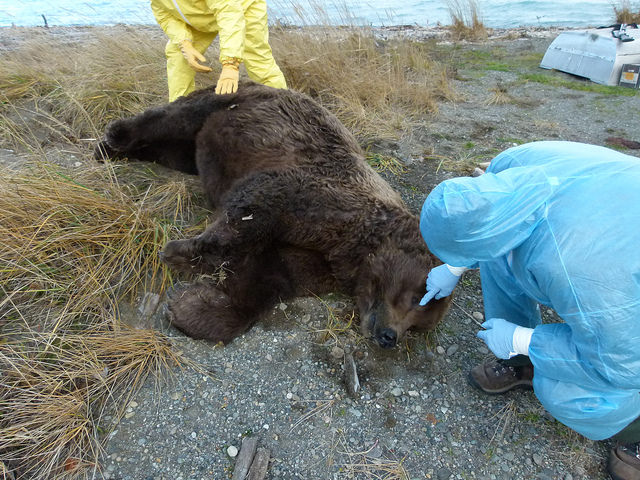
Wildlife officials at Katmai National Park perform a field necropsy on a dead Grizzly bear.
Photos courtesy Katmai National Park
-
Katmai National Park
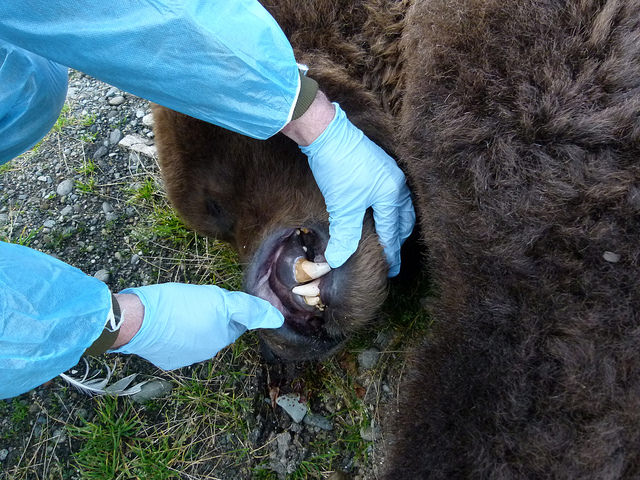
Wildlife officials at Katmai National Park perform a field necropsy on a dead Grizzly bear.
Photos courtesy Katmai National Park
-
Katmai National Park
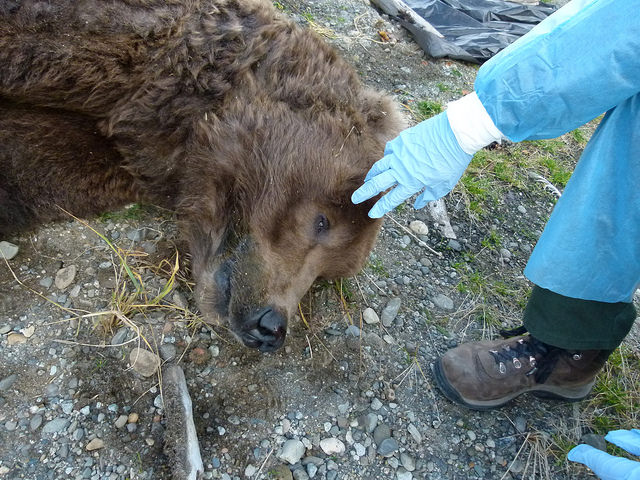
Wildlife officials at Katmai National Park perform a field necropsy on a dead Grizzly bear.
Photos courtesy Katmai National Park
-
Katmai National Park
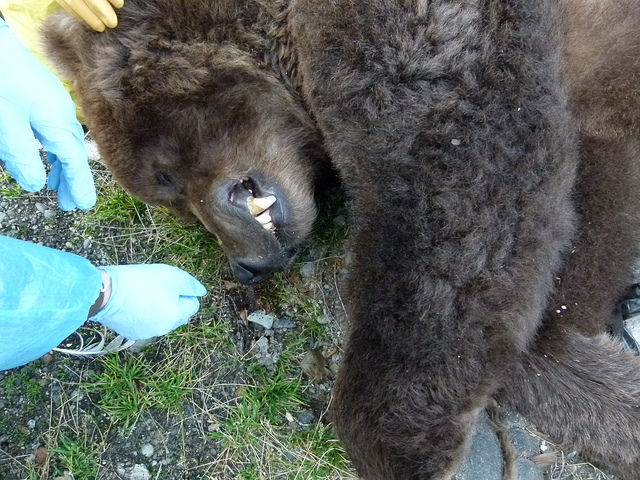
Wildlife officials at Katmai National Park perform a field necropsy on a dead Grizzly bear.
Photos courtesy Katmai National Park
-
Katmai National Park
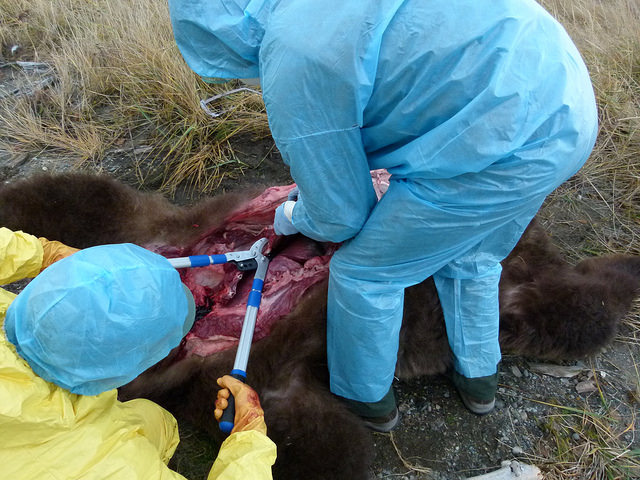
Wildlife officials at Katmai National Park perform a field necropsy on a dead Grizzly bear.
Photos courtesy Katmai National Park








